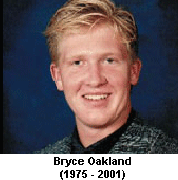If you’ve seen the 2002 science-fiction film “Minority Report,” you’re familiar with the idea of predicting and stopping crimes before they even happen. Now, a decade after the movie came out, we’re one step closer to making this sort of preemptive crime fighting a reality.
BRS (Behavioral Recognition Systems) Labs is deploying surveillance cameras with technology that can detect certain behaviors in San Francisco subway systems. According to Fast Company, the San Francisco‘s Municipal Transit Authority’s contract is for 12 subway stations to be outfitted with the cameras that use algorithms to target potentially criminal behavior. Here’s how it works:
Servers connected to security cameras observe locations for weeks at a time and then establish a baseline of “normal” behavior based on this timespan; anomalous activities afterwards (loitering, abandoned packages, abnormally high/low numbers of passengers) trigger an alert. No tripwires or programming of initial parameters are required.
In an interview with Fast Company, BRS Labs President John Frazzini said that the company’s AIsight behavior recognition product relies on 11 patents related to computer vision technology and surveillance imagery. BRS’s patents primarily deal with the intersection between computer vision and machine learning; video footage grabbed by MUNI cameras will be automatically translated into code for real-time processing. Clips of anomalous activity are dispatched to MUNI employees automatically; SMS text message alerts are also sent to staffers’ mobile phones.
Another unique aspect of BRS’s product is the fact that it heavily relies on timestamps and time recognition. Behavior and objects are coded according to the times of day or days of the week in which they most frequently occur; the velocity, acceleration, and path of customers passing through a station are analyzed as well. Spatial anomalies and classification anomalies are taken into account as well.
Earlier this year, BRS Labs received a patent for its AISight 3.0 video surveillance software platform, which according to the press release “accepts video streams from standard cameras, detects and tracks subjects, characterizes their appearances and properties, classifies them, learns the patterns of behavior they exhibit, remembers those patterns, recognizes behaviors that deviate from those patterns, and alerts the user about those events in real time.”
In addition to installing the equipment in San Francisco, other BRS clients include government, tourist attractions, military bases, and private industry. Some of them are the City of Houston, Boeing, and the Nuclear Regulatory Commission. Fast Company also notes that it appears a pilot program using BRS Labs technology will also be installed at the new World Trade Center.







